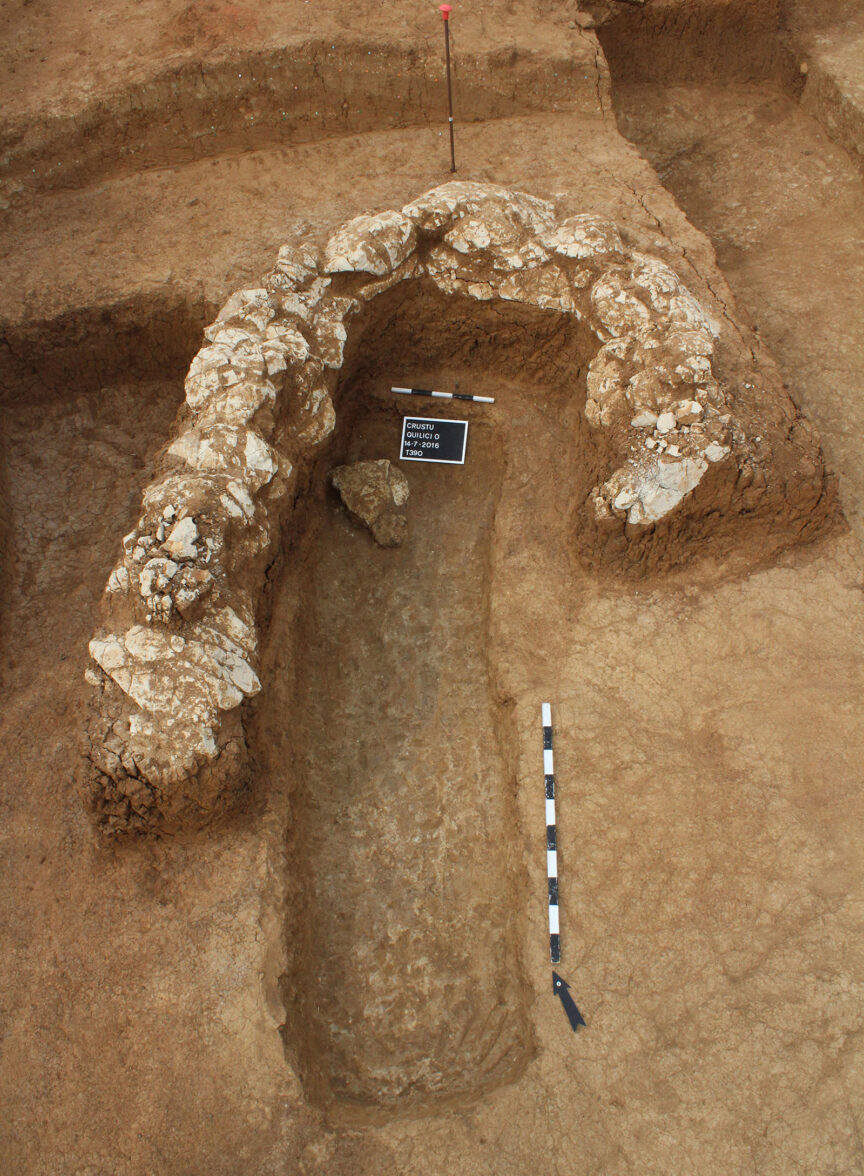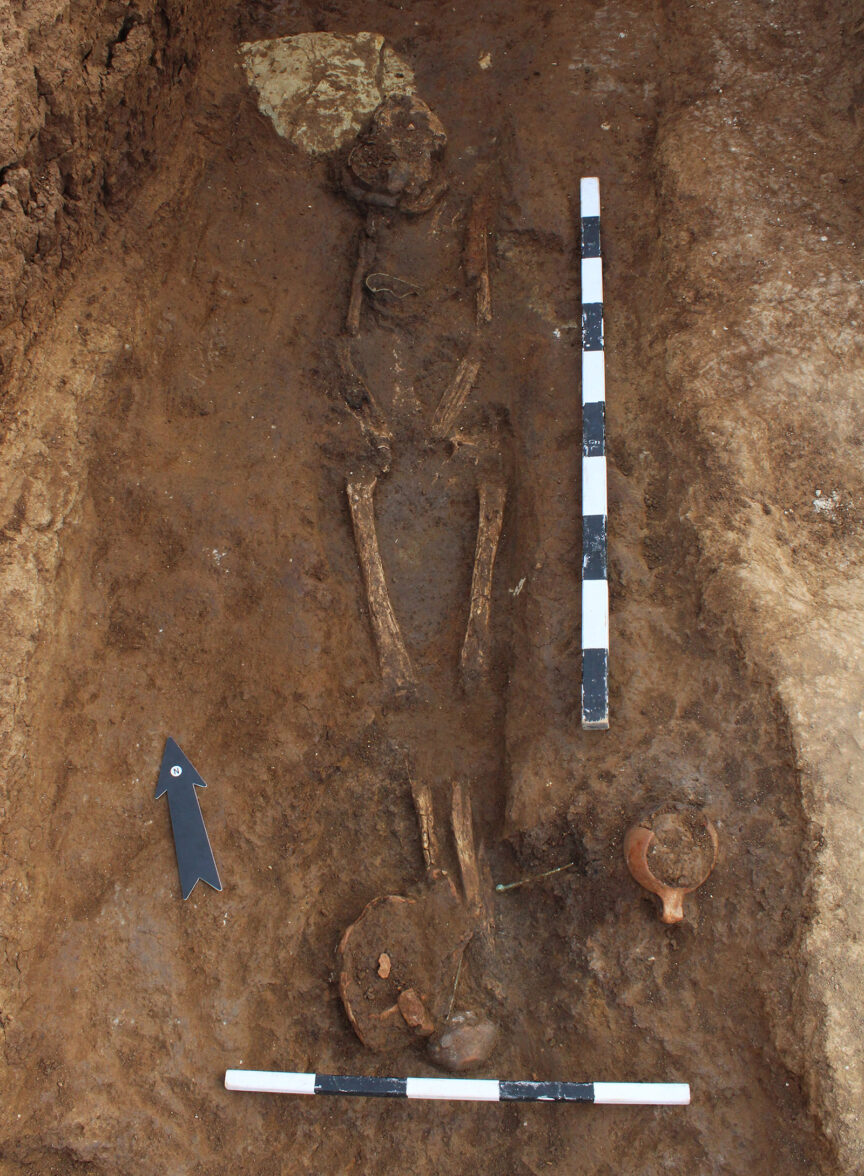Introduction
The frontier position of Crustumerium, on the border between Etruscan, Faliscan-Capenates Sabine, and Latin territories, resulted in a distinctive funerary culture. The tomb architecture and grave goods reflect both the adoption and adaptation of Etruscan and Latin customs.
The burial grounds of Crustumerium consist of independent cemeteries that lay on the slopes of the settlement plateau and the adjacent hills. The majority of the tombs are found along the main roads that led from the settlement into the countryside and towards neighbouring settlements. Burials within the settlement are very rare. As a rule, deceased adults were not buried within the perimeter of the settlement; an exception could be made for children, although their graves are uncommon.
Since the discovery of Crustumerium, excavations have mainly concentrated on the burial grounds in order to save valuable archaeological information threatened by the destructive activities of grave robbers (called tombaroli in Italian). Occasional looting already occurred in the 1970s but it only really took off in the 1980s, affecting all burial areas.
Ironically, it is largely by mapping the traces of these illicit activities that we know the existence and extent of Crustumerium’s burial grounds. The different areas are conventionally known by their cadastral or local toponyms – Campo Grande, Cisterna Grande, Marcigliano, Monte Del Bufalo, and Sasso Bianco. Of these, the Monte Del Bufalo cemetery has been the most extensively explored.

▲ The settlement of Crustumerium (outlined in black) and the burial grounds (in yellow) surrounding the settlement.
▲ A well-preserved grave, topped by a low heap of soil (tumuletto) and a structure of white tuff chunks, perhaps representing a symbolic hut. The body was deposited in a shallow trench; grave goods were placed near the feet.

▲ Selection of shapes found in tombs from the Orientalising period: jar (a), amphoras (b-c), olla a coppette (d), ladle-cups (e-f), double-handled cups of different sizes (g-h), krater-cup (i), scodella crustumina (j) and mug (k).
Different Customs
Most of the burial areas already started to develop during the earliest phase of Crustumerium, i.e. from ca. 850 BC to 725 BC, and mainly developed along the various roads radiating from the city. Tombs known from this period are few in number; the obvious result of their shallowness, making them susceptible to erosion, but probably also indicating that funerary rituals were restricted in this period. These Early Iron Age tombs consisted of shallow rectangular shafts cut into the bedrock, with the body placed inside a (tree-trunk) coffin, marked at ground-level by tuff grave markers, which are only found ex situ, such as when reused as closing stones in later tombs.
An exceptionally well-preserved grave (see image to the left) shows that at least some of these graves were covered by a small heap of soil (a so-called tumuletto). The funerary assemblage was limited, usually consisting of just 4 or 5 pottery objects placed alongside the body. From the end of the eighth century BC, the grave goods were placed in a small niche usually at the northern end of the grave.
In the subsequent Orientalising period, from ca. 725 BC onward, the Early Iron Age burials plots remained in use and new tombs were positioned close to the older ones, but rarely intersected them, indicating that the tombs were marked at ground level. The desire to be buried close to ancestors, stressing kinship relationships, is also expressed through the reuse of tombs, shared graves, and the introduction of chamber tombs at the end of the Orientalising period.
The Orientalising period sees a strong rise in the number of graves, yielding on average a far larger number of vessels, highlighting the increasing importance of eating and drinking rituals, and, occasionally, prestige objects.
The size of funerary assemblages decreases significantly from the end of the seventh century BC onward, eventually becoming virtually absent at the end of the sixth century. Traditionally, this reduction is explained by the restrictions outlined in early Roman laws known as the Twelve Tables, limiting conspicuous display at funerals. Alternatively, the decline in investment and display has been explained by the rise of urban settlements, allowing (elite) families to display their wealth throughout a longer period than the short-lived visibility of the funerary realm
Take a Tour



